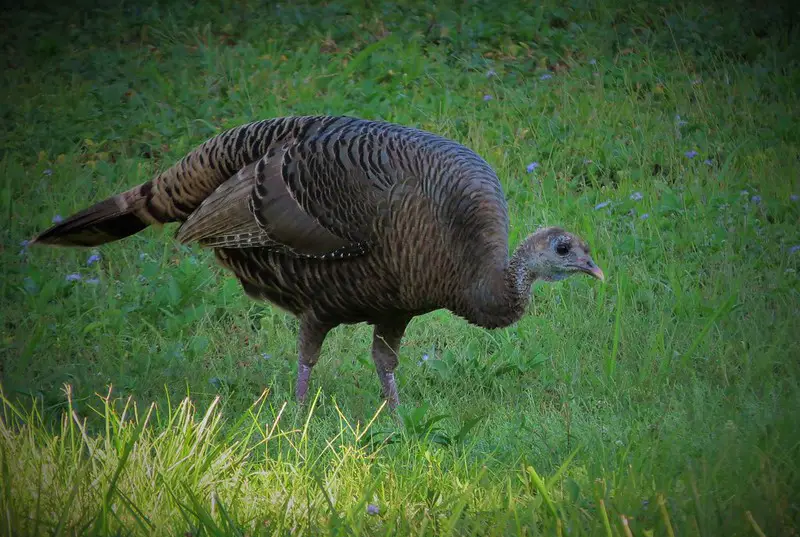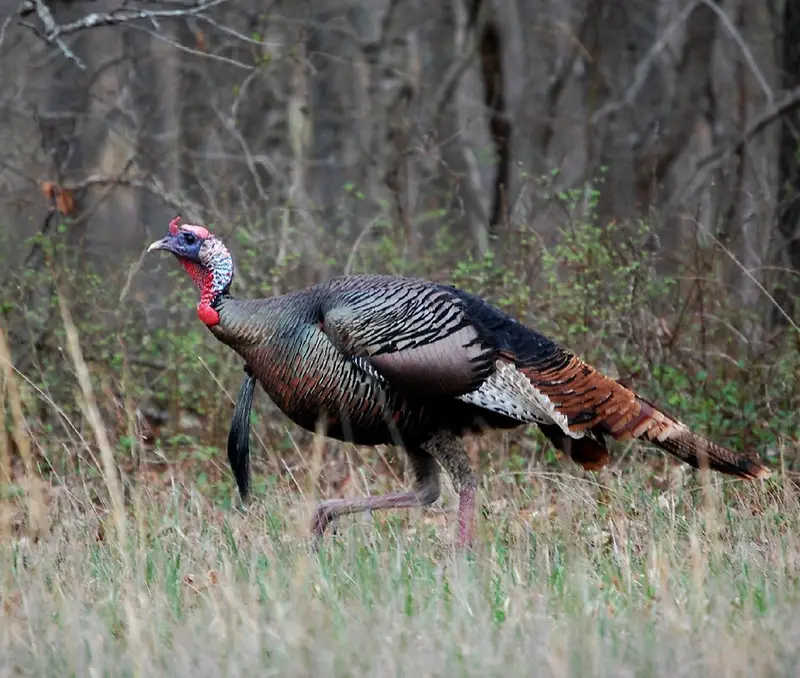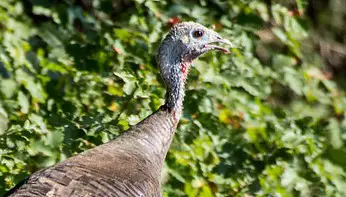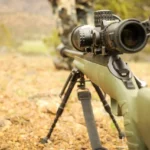If you’ve ever wanted to try a lion’s mane mushroom you’d be hard-pressed to find one at the local supermarket. Yet, these unusual mushrooms are tasty and healthy, and there are numerous health benefits from consuming them.
If you’d like to learn how to grow these mushrooms yourself, then keep on reading. We’re covering their characteristics, health benefits, storage, and step-by-step instructions for cultivating lion’s mane mushrooms indoors and on logs.
Table of Contents
- What is a Lion’s Mane Mushroom?
- Is Lion’s Mane Mushroom Easy to Grow?
- Growing in bags vs on logs
- How to Grow Lion’s Mane Mushrooms Indoors
- How to Grow Lion’s Mane Mushrooms on Logs
- When should you harvest Lion’s Mane Mushroom?
- How should Lion’s Mushroom be stored?
- Lion’s Mane Mushroom FAQs
- Other Growing Guides
What is a Lion’s Mane Mushroom?
The lion’s mane mushroom (also known as Hericium Erinaceus) is a white, pom-pom-like fungus that resembles the mane of a lion.
Individual mushrooms can grow to be fairly big, weighing as much as half a kilogramme. The spines, or “teeth,” begin short but become longer with age. The mushroom is spongy and semi-hollow at times.
These unusual-looking mushrooms are found on rotting hardwood trees and logs throughout the northern hemisphere and are native to Asia, Europe, and North America.
Lion’s mane mushrooms are edible as well as medicinal, with a variety of potential health benefits. These potential benefits include protection against dementia, protection against stomach ulcers, reduced risk of heart disease, diabetes symptom management, and many more.
It’s pretty much impossible to buy fresh lion’s mane mushrooms in the UK due to the fact that it’s a relatively unknown species. Your best bet is to find a specialist farmer, or, the easier option, is to grow this species of mushroom yourself.
Is Lion’s Mane Mushroom Easy to Grow?
Lion’s mane is a reasonably simple mushroom to cultivate, but it can be a challenge for novices because the mycelium takes longer to develop than other mushrooms, creating an increased risk of contamination. It can also be challenging for first time growers to determine whether the lion’s mane is fully colonised and ready to produce fruit.
If you’re new to mushroom growing, we suggest you should get some hands-on experience first. The easiest way to practise mushroom cultivation is by growing your own! Oyster mushrooms are a great place to start. Alternatively, you can use a Lion’s Mane Mushroom Growing Kit if you’re keen to try lion’s mane at home without the hassle of growing your own from scratch!
Growing in bags vs on logs
The two most popular methods of growing lion’s mane mushrooms are in bags or on logs. They both have their positives and negatives, but the answer to the best way to grow lion’s mane mushrooms is dependent on your experience and the harvest time you are hoping for.
If you’re growing lion’s mane on logs, you should expect to harvest your first batch in one to two years following inoculation. You can harvest lion’s mane mushrooms from a single log for up to six years after they begin to grow. It’s important to note growing mushrooms on logs generally requires more effort and resources to set up, but are relatively easy to maintain during incubation.
It takes far less time to grow lion’s mane indoors in a bag or container. The lion’s mane mushroom can be harvested in about 6 to 8 weeks after inoculating your substrate. Growing in bags is debatably the easier option if you are just starting out, but if you already have some growing experience under your belt then consider when you want your mushrooms to be harvestable.
It’s worth noting that bags can be used to grow mushrooms indoors, whereas logs have to be grown outdoors.
How to Grow Lion’s Mane Mushrooms Indoors
Below we’ve put together a step-by-step tutorial to help you grow lion’s mane mushrooms in a bag or container.
Buy Now Lion’s Mane Mushroom Grain Spawn From £15.99
Step 1. Preparing Your Supplies & Growing Space
It’s essential that you keep your work environment clean and sterile during the inoculation procedure. When you have spent time preparing your mushrooms, the last thing you want to do is introduce competitive bacteria into your substrate that could outcompete your spawn. Before you start, wipe everything down with isopropyl alcohol or another cleaning solution.
After you have cleaned your workplace, you need to assemble all the equipment and supplies needed.
There are several ways you can choose to grow Lion’s Mane mushrooms but growers typically opt to begin the process of substrate preparation, inoculation and incubation within a mushroom growing bag. This makes life a lot easier when handling aspects like sterilisation and pasteurisation too.
From there, it is really a preference in growing technique. Some growers prefer to keep their Lion’s Mane growing from the bag, some prefer to use jars, others choose fruiting chambers. The key considerations are ensuring that the substrate has successfully been inoculated and colonised and that the eventual growing environment has sufficient humidity.
Some supplies we recommend
- A Pressure cooker
- Kitchen Scales
- Measuring cups
- Lion’s mane grain spawn
- Mushroom growing bags or buckets
- Hardwood pellets
- Soy Hulls
Step 2. Preparing Your Mushroom Substrate
Preparing your mushroom substrate correctly is a critical step in the cultivation of any mushroom. It is where most new growers experience problems, as this is where bacteria or competing organisms are first introduced. This is especially true in the case of Lion’s mane mushrooms as the fungus takes much longer to develop than other commonly cultivated mushrooms. As a result, there is a often a much greater window of time for contamination to occur.
There are several types of substrate you could opt for when growing Lion’s Mane mushrooms. In this guide, we’ll be focusing on hardwood fuel pellets (HWFP) but you can learn about more types of substrates here.
A good substrate should provide the sustenance your fungi need to thrive and produce delicious mushrooms. It provides all of the nutrients, nitrates and hydration, so it is key you start on the right foot. Supplemented substrates are usually preferred by experienced growers when working with Lion’s Mane.
Whilst some prefer to use bran or oat supplements, one of our favourite and most recommended substrates for growing Lion’s Mane is Master’s Mix.
What is Master’s Mix?
Master’s Mix is a blend between hardwood pellets and soy hulls, which is ideal for Lion’s Mane as it naturally occurs on hardwood trees and the added soy provides an excellent source for the nitrogen and protein for the fungi.
It also provides a structure that is well suited for mycelium growth, allowing for fast colonisation and greater yield sizes.
Whilst sterilization isn’t strictly necessary for hardwood pellets, it is best practice that you do so to maximise your chances of success. Plus, if you do opt for a mixed blend like Master’s mix, you will most certainly need to sterilize your substrate mix.
We have a detailed guide to Master’s Mix in the works, but following the steps below will give you everything you need to know to get started.
Making your Master’s Mix Blend
To produce a simple master’s mix, prepare even amounts of hardwood fuel pellets and soy hulls. The recommended hydration level for a Masters’ Mix is 60% but if you’re using hardwood pellets, you will need to allow for additional water to redhyrate the pellets sufficiently.
Below are the supplies and weights need to produce a 2.3kg substrate:
- 450g hardwood pellets
- 450g soy hulls
- 1.4L clean water
- A growing container (we recommend using a mushroom growing bag)
- A pair of weight scales
- A pressure cooker (Optional)
- Latex gloves (Optional)
The first thing you will need to do is to mix your hardwood pellets and soy hulls together in a sterilised container or bag. Next, you will need to add the clean water to the mix. Allow this to sit for 5-10 minutes (or as long as required) to rehydrate the pellets into a sawdust-like mix. If you’re using a mushroom growing bag, it is easiest to hydrate your pellets and mix the supplies directly in the bag.
Sterlising your Substrate Mix
The next step is to sterilise your substrate mixture. There are several ways to sterilise and pastuerise a substrate, but it is recommend that you use a pressure cooker to do so.
If your mix has now hydrated, simply fold and seal the growing bag and place it into your pressure cooker. It is recommended to leave the mix in the cooker for at least two hours at a pressure of 15PSI.
Once your substrate mix has been in the cooker for 2 or more hours, you will need to carefully remove the growing bag and allow it to completely cool in a sanitary environment.
When the substrate has fully cooled, it is time to begin the inoculation process.
Step 3. Inoculating Your Mushroom Substrate
Before starting the inoculation process, use soap and water to thoroughly clean your hands before handling any of your growing materials. You should also ensure that the working environment has been sanitised prior to unsealing the growing bag.
We also recommend continuing this next step in a controlled decontaminated space, such as a flow hood or a DIY container (such as a sterilised clear box with embedded gloves).
For a 2.3kg substrate, we would recommend using 200 grams of grain spawn mix. We stock grain spawn in sizes from 600g to 3kg, so you will have plenty to work with.
If using grain spawn, carefully break apart the spawn and mix throughout the substrate mix, ensuring even coverage and layering.
Once your lion’s mane spawn has been mixed into the substrate, seal your growing bag or cover your container.
A better way to do this is to open the bag following pressure cooking, rapidly add the spawn, seal it immediately, and then mix the material within the sealed bag. This is ideally done in front of a flow hood and reduces exposure time.
Step 4. Incubating Your Lion’s Mane Mushrooms
Now that you’ve prepared and inoculated your substrate, it’s time to let the fungi do its thing.
Place your growing bag in a dark space away from direct sunlight and store at room temperature (18-25°C), although consistently at 23°C is ideal.
How long does it take for Lion’s Mane mushrooms to colonise?
It can take between 14-21 days for your Lion’s Mane to colonise the substrate mix but this could take longer depending on a number of factors, such as the amount of spawn used, the substrate hydration level, and external storage conditions and the quality of the spawn.
How to tell if Lion’s Mane is fully colonised
When compared with other commonly cultivated mushrooms, Lion’s Mane mushroom mycelium threads (known as hyphae) are somewhat finer in appearance and can make it harder to determine whether it has fully colonised the substrate.
Ideally, you will see the substrate mix even coated in a white mycelium, but other ways of testing include feeling the mix to test whether it has become firmer to the touch.
Step 5. How to Help Your Lion’s Mane To Fruit
While your Lion’s Mane is perfectly capable of fruiting their mushrooms when ready, it can be helpful to provide a helping hand by creating conditions that encourage a flush to appear.
For Lion’s Mane, this can be achieved by increasing the humidity of the growing environment. Whilst keeping the growing bag in a shady area, try misting the substrate several times a day with water.
You can also place your growing bag into a plastic liner and spray the inside lining to create a contained humid environment. Pro tip: if you’re not able to mist your substrate every day, place wet tissue paper or cloth inside of the outer lining to maintain humidity.
We suggest cutting a small (5 cm) hole on the side of your bag rather than the top. If you cut the top of the bag or open the entire top, the substrate dries out faster and you get a lot of smaller mushrooms instead of a few large groupings.
Only one hole in your bag is required for every 750 grams of substrate. For most bags, one hole is sufficient. However, if you have a really large bag, you may want to cut more holes.
If your bag has any extra room at the top, we recommend folding it down and taping it in place. Mushrooms may attempt to grow from the top if this is not done.
How to Grow Lion’s Mane Mushrooms on Logs
Growing lion’s mane on logs is a low-cost approach to ensure a consistent, long-term supply of fresh lion’s mane.
Everything you need to know about growing lion’s mane on logs is included in the step-by-step guide below. For a more in-depth guide on growing on logs, check out our full article on the topic.
What you’ll need:
- Lion’s mane mushroom plug spawn
- Comprising dowels, wax and wax applicator
- Hardwood logs, which are 2-6 weeks old
- Hammer
- Drill with 8mm bit (depending on the size of dowels)
- Gas cooker (if not near to a domestic stove)
- Pan for heating the wax
Buy Now Lion’s Mane Mushroom Plug Spawn From £7.98
Step 1. Preparing Your Supplies & Growing Space
As mentioned above, it’s essential to keep your growing space clean to avoid contamination of your spawn.
When growing lion’s mane mushrooms, always use hardwood logs, we suggest beech or oak logs.
It’s vital to choose healthy trees while selecting logs and to never use logs older than 6 weeks. Any tree with rotting wood or symptoms of infection faces an increased risk of competition with pre-existing fungus in the logs.
Start by drilling a row of 15 cm holes down the length of your log. This is deep enough that when you hammer your plug into the wood, it will leave a little space underneath it, giving an ideal environment for the mycelium to thrive.
After you’ve finished the first row of holes, place the following row of holes in a staggered pattern. Begin the next row of holes 6 cm apart from the first, staggering the rows to create a diamond or checkerboard pattern.
Step 2. Inoculating Your Logs
Getting your plug spawn dowels into the hole should now be a breeze. All you have to do now is gently tap them in with a hammer to secure them.
Your plugs should be flush with the log’s timber and just beneath the bark’s surface. You’ll be able to plug the hole with wax this way.
This is an important step in keeping your mycelium safe and uninfected. The most common form of wax used to fill holes is soy wax; however, other waxes such as cheese or beeswax can also be utilised.
Once the wax has melted, use a wax applicator to apply it to your holes. You can buy them inexpensively or make your own with a cotton ball or rag, or a small brush.
Step 3. Incubating Your Lion’s Mane Mushrooms
Once you have inserted the spawn into your logs and sealed them with wax, your logs are pretty much ready to be left for incubation.
There are several options for storing logs during incubation. Shaded areas like beneath a tree or the side of a house are ideal places to keep your logs.
The most important thing is to keep your logs in an area with good air circulation and a high humidity level.
In dry weather, water your logs with a hose once or twice a week for 10 minutes to maintain the proper moisture level. If they dry out, your mycelium will die.
Step 4. How to Help Your Lion’s Mane To Fruit
You can speed up the growth of your mushrooms by initiating or ‘shocking’ your logs. This can be accomplished by soaking them in cold water for 12-24 hours. This can be done in a stream or pond, a kiddie pool, or even bathtubs or boats!
To ensure that the mycelium has colonised the majority of the log, wait at least a year before shocking it. Instead of waiting two or three years for mushrooms to grow normally, shock is a great technique to accelerate their growth.
When should you harvest Lion’s Mane Mushroom?
It won’t be long before you can harvest and enjoy your lion’s mane mushrooms as they begin to fruit. You might be eating excellent, fresh lion’s mane mushrooms in as little as 4 weeks.
A Lion’s mane mushroom has reached maturity when it stops expanding in diameter and its spines start to lengthen and thicken.
Harvest them before they turn pink or brown for the best taste. To achieve various mane textures, harvest the lion’s mane at various stages of growth and maturity. Younger lion’s mane mushrooms are firmer than their older counterparts.
Cut the “ball” off close to the base of the Lion’s Mane using a sharp knife, being careful not to injure the fruit. If handled gently to avoid bruising, lion’s mane will stay considerably longer in the fridge.
How should Lion’s Mushroom be stored?
Fresh lion’s mane keeps for about a week in the refrigerator. If you have more lion’s mane mushrooms than you can use in a week, dry them out in a food dehydrator or oven to store them.
Fresh vs Dried
Keep them refrigerated and away from water if you’re storing them fresh. Keep in mind that they will only survive a few days in the fridge.
If you want to keep the mushrooms fresh, put them in a paper bag that isn’t too full. They must be able to breathe and keep away from direct dampness; otherwise, they will absorb it like sponges.
If you discover any dark or soft places on a mushroom, or if the mushroom feels squishy and slimy, it’s a dead giveaway that it’s going bad.
Consider drying your mushrooms for a longer-term approach to storing them.
You must finely slice your mushrooms after properly washing them. After that, you set them on your tray and dehydrate them. They’ll be there for the next 6-8 hours. Once completely dry and crisp, seal in a jar and store until ready to eat.
Although this is a straightforward method for long-term storage, it can be time-consuming.
Lion’s Mane Mushroom FAQs
Are Lion’s Mane Good for You?
Lion’s mane mushrooms are a type of medicinal mushroom with a variety of health advantages.
According to research, lion’s mane mushrooms can strengthen the immune system which protects the body from pathogens that enter through the nose and mouth.
Are Lion’s Mane’s Mushrooms Legal?
Lion’s mane mushrooms are perfectly legal. It’s only that fresh lion’s mane is hard to come by, and you’re unlikely to find them at your local supermarket.
What substrates does Lion’s Mane grow best on?
The following are the best types of substrate for growing your Lion’s Mane:
- Hardwood logs (I.e. Ash or Beech)
- Hardwood fuel pellets (HWFP)
- Master’s Mix Supplemented








![Air gun 101: The differences between .177 & .22 – Which jobs they do best ? [Infographic]](https://airgunmaniac.b-cdn.net/wp-content/uploads/2024/11/1773-218x150.jpeg)



























































